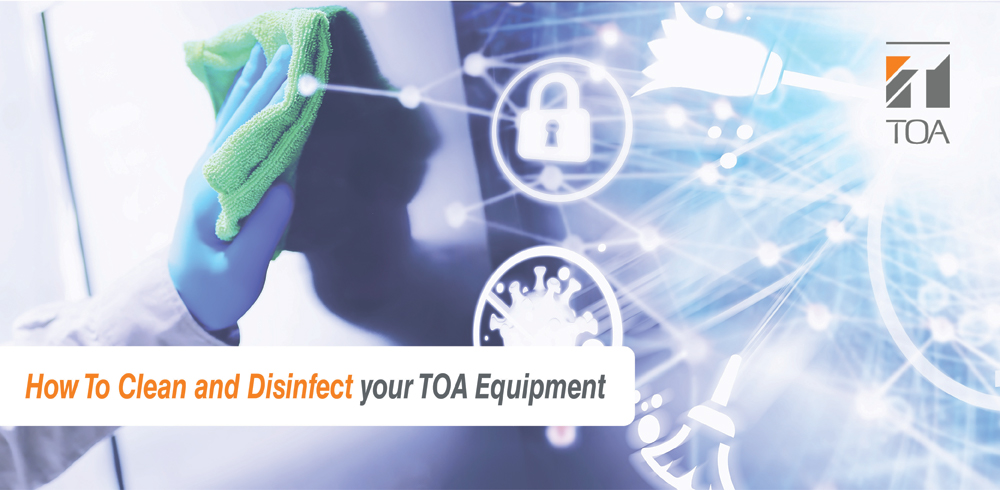How to Clean and Disinfect Your TOA Equipment Properly?

In this article, we would like to share with you how to clean and disinfect your TOA equipment properly and what you should avoid doing when cleaning and disinfecting your equipment.
Introduction
Due to the global impact of COVID-19, we have now learned the importance of washing hands, sanitizing and disinfecting but do you ever wonder how you expose yourself to germs all over again by touching your phone, television, and wireless microphone, speakers?
To prevent the spread of the virus, it is recommended to "disinfect common areas and high touch surfaces." Loudspeakers, microphones, headsets, etc. are usually shared by multiple people in the same space and used near the mouth as user speaks directly into it, so saliva droplets may get attached on this equipment and the virus can spread through these devices if not cleaned and disinfected properly. We will be sharing with you specifically how to clean your intercom units, microphones and megaphones.
Specific cleaning procedures to keep the surface of the product clean and hygienic is effective to help preventing the spread of COVID-19.
What To Prepare
Before You Start
Precautions To Take
- To prevent damage to printed area due to detergent, do not rub/wipe the printed area with force.
- After disinfecting, make sure all surfaces are dry before you switch on the power to the equipment.
- Warranty does not cover changes in the exterior due to disinfecting, acceleration of deterioration over time, or defects caused by incorrect cleaning procedures.
Suggested Preparation of Cleaning Solution
99.5% water to 0.5% disinfecting soap and dishwashing liquid
- Prepare only the desired amount needed for each use. Avoid storing prepared portion.
- Keep out of reach to children to prevent accidental ingestion
Cleaning Process
- Dip microfiber cloth into the cleaning solution, be sure your squeeze dry the microfiber cloth before you wipe the surface that needs to be cleaned.
(IMPORTANT: It is recommended to test on an inconspicuous area first before you clean the entire surface of the equipment)
- After confirming that there is no problem with the trial wiping, make sure you squeeze tightly the microfiber to remove the remaining excess liquid then proceed to wipe down the surfaces/parts that needs disinfection.
- After cleaning with detergent, soak another microfiber cloth in water, squeeze tightly to dry the microfiber cloth and use it to wipe off the detergent and finish it.
- Equipment should be then leave to dry completely before turning the power back on.
When the wind screen of the microphone is a sponge
If the windscreen of the microphone is made of sponge, please replace it.
If the sponge can be removed, it should be removed and disinfect separately. If sponge is damaged due to aging, please replace it.
Q&A
Q1: Can I use alcohol as a disinfectant?
A1: Alcohol is not recommended as it is likely to damage the resin part of the product. Deterioration may accelerate if used.
Q2: Can I use hypochlorous acid water as disinfectant?
A2: Hypochlorite water is not recommended as it is likely to damage the rubber part of the product. Deterioration may accelerate if used.
Q3: The instruction manual states that to use a neutral detergent. Is it ok to use a non-neutral detergent?
A3: Neutral detergent has the lowest risk of deterioration in terms of design. However, if you take the availability into consideration and follow the procedure to wipe off the detergent with water, there is almost no problem with using a weak alkaline or weak acidic detergent.










